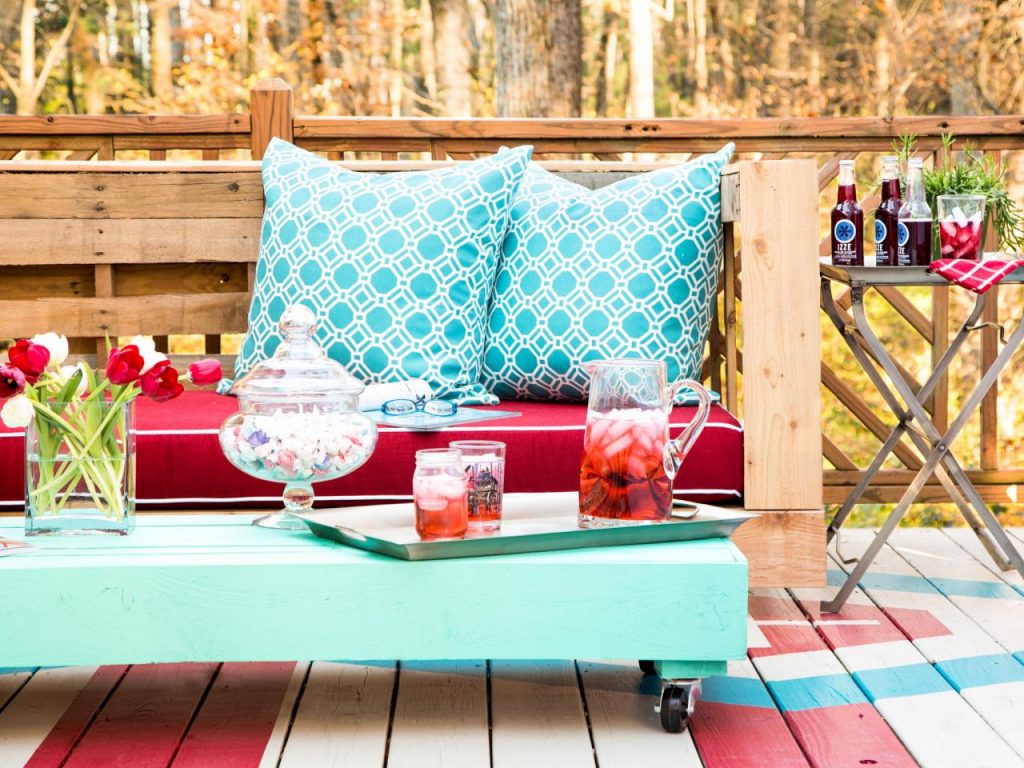Alocasia Pflanze - Pflegetipps, Beliebte Sorten, Vermehrung
Die Alocasia ist eine sehr charakteristische Zimmerpflanze. Sie wird immer beliebter. Ihre großen und interessant gefärbten Blätter sind das charakteristischste Merkmal dieser Pflanze. Manche bezeichnen die Alocasia als tropische Pflanze, und in der Tat sieht sie im Vergleich zu anderen Arten recht exotisch aus. Die Fähigkeit, die Luft zu reinigen, ist ein großes Plus. Informieren Sie sich über die Bedürfnisse von Alocasia und lernen Sie, wie man sie pflegt.
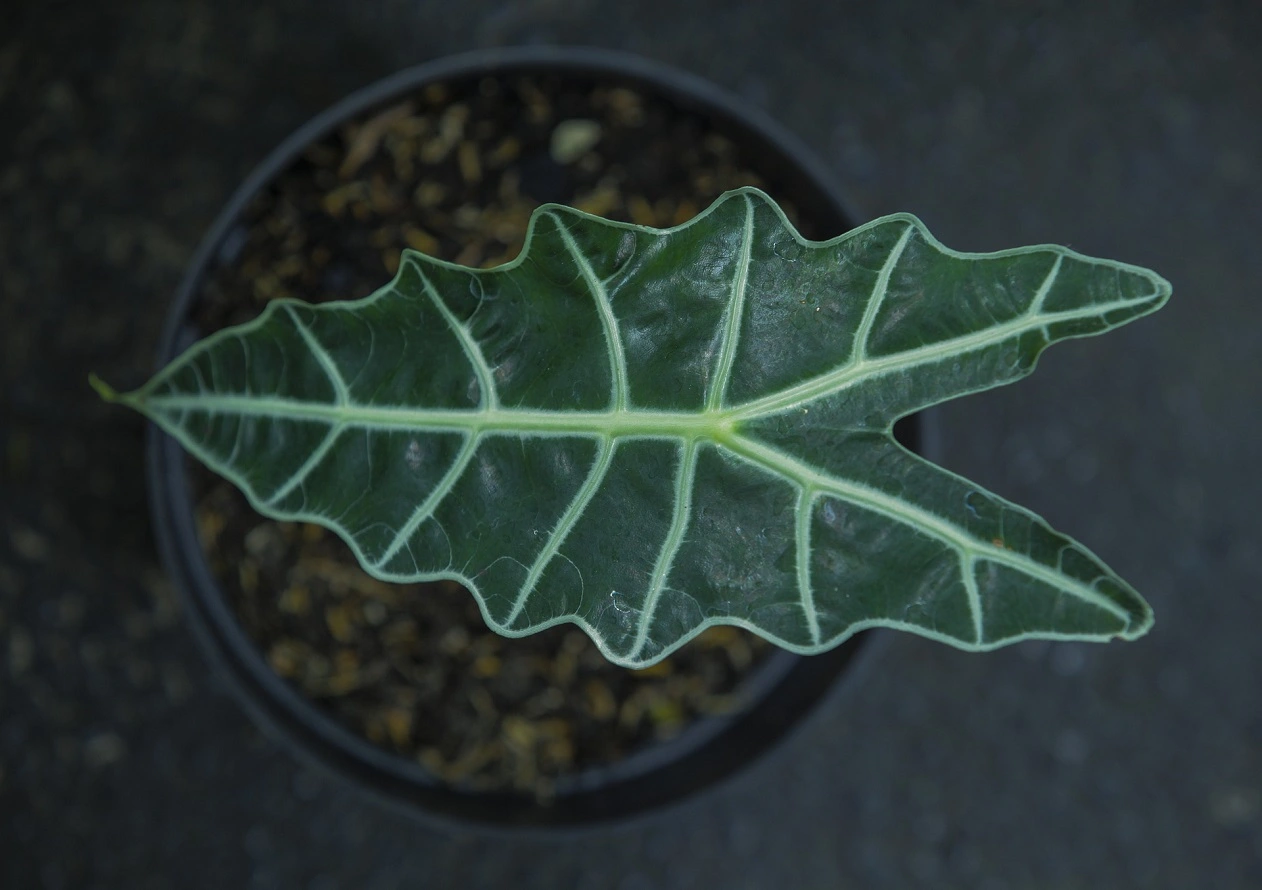
Alocasia - Merkmale und Aussehen
Alocasia (Alocasia) ist eine mehrjährige Pflanze, die aus Asien stammt, wo sie natürlich in tropischen Wäldern wächst. An anderen Orten der Welt wird sie als Zimmerpflanze gezüchtet. Sie ist auch eine perfekte Art für beheizte Wintergärten.
Alocasia hat charakteristisch aussehende Blätter. Sie sind sehr groß - sie werden bis zu 50-60 cm lang. Ihre Oberfläche ist mit sichtbaren Nerven bedeckt. Interessanterweise wachsen sie an langen Stängeln, die direkt aus den unterirdischen Wurzeln der Pflanze entspringen.
Dunkelgrün ist die Grundfarbe der Alocasia-Pflanzen. Die eigentümlichen Nerven haben verschiedene helle Farben - weiß, cremefarben oder gelb, je nach Art. Die unteren Teile der Blätter verleihen der Pflanze einen exotischen Touch. Sie sind bei vielen Sorten violett.
In den meisten Fällen blühen Alokasien nicht. Aber wenn es doch passiert, sind die Blüten recht klein. Mit der Pflanze muss man vorsichtig sein, denn sie ist giftig. Der Saft in den Blättern ist besonders für kleine Kinder und Haustiere gefährlich.

Alocasia-Sorten, die Sie überraschen werden
Auf der ganzen Welt gibt es verschiedene Alocasia-Sorten. Sie unterscheiden sich vor allem durch das Aussehen der Blätter. Schätzungen zufolge gibt es über 80 Sorten dieser Pflanze. Einige davon sind besonders beliebt.
- Alocasia ‘Zebrina’ - diese Sorte hat eine besondere, pfeilartige Form der Blätter. Die Nerven sind deutlich und ähneln Streifen, wie bei Zebras.
- Alocasia ‘Amazonica’ - auch Amazonas-Elefantenohr genannt. Sie hat eine charakteristische Verteilung der Nerven auf der Blattoberfläche. Die Pflanze hat sehr dicke Stängel. Bei einigen Sorten entwickeln sie eine braune Farbe.
- Alocasia ‘Cucullata’ - die Blätter haben ebenfalls eine pfeilartige Form. Ihre Oberfläche ist leicht samtig, wobei silberne Nerven durchschimmern.
- Alocasia ‘Lauterbachiana’ - eine der wenigen Alocasia-Sorten mit sehr langen Blättern. Sie sind gewellt, und die Unterseite hat eine leicht rötliche Farbe.
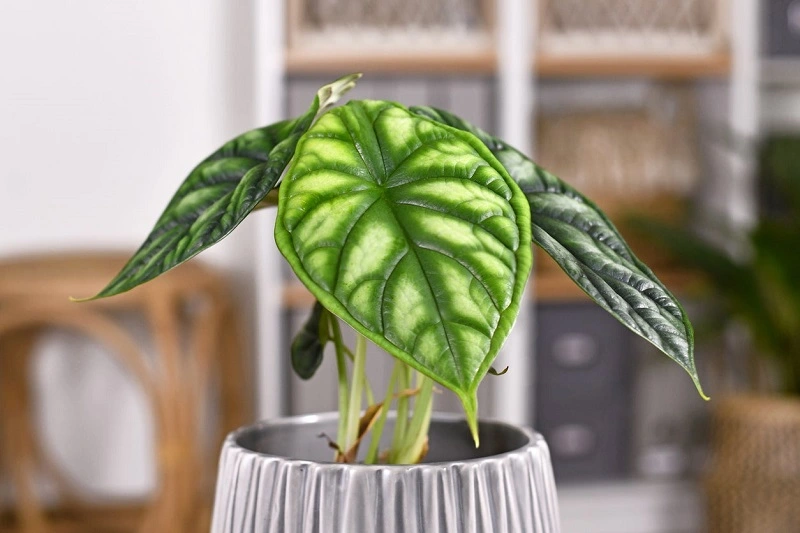
Amazonas-Elefantenohr - nicht jedes sieht gleich aus
Es gibt viele Untersorten von Amazonas-Alokasien, und sie sind sehr beliebt. Werfen Sie einen Blick auf die am häufigsten gepflückten Exemplare:
- alocasia ‘Polly’
- alocasia ‘Bambino Arrow’
- alocasia ‘Calidora’
- alocasia ‘Portadora’
Alocasia - Boden, Standort und Temperatur
Alocasia ist eine Pflanze, die einen nährstoffreichen Boden mit einem pH-Wert von 5,5 benötigt. Das bedeutet, dass der Boden leicht sauer sein sollte. Eine Bodenmischung mit den folgenden Elementen ist die beste Wahl:
- Torf,
- Sand,
- Kompost.
Achten Sie darauf, eine Drainageschicht auf dem Boden des Topfes anzubringen. Sie können kleine Kieselsteine oder Blähton verwenden.
Was den besten Standort für die Alokasie betrifft, so sollte er sonnig sein. Aber einen Topf mit Elefantenohrpflanze auf eine Fensterbank zu stellen, ist nicht die beste Idee. Die Sonneneinstrahlung sollte indirekt sein, daher ist ein Platz in der Nähe eines Fensters oder einer Balkontür die bessere Wahl.
Alocasia verträgt Zimmertemperatur, vorzugsweise 24-27°C (75.2-80.6°F). Temperaturen unter 19 °C können für die Pflanze gefährlich sein.
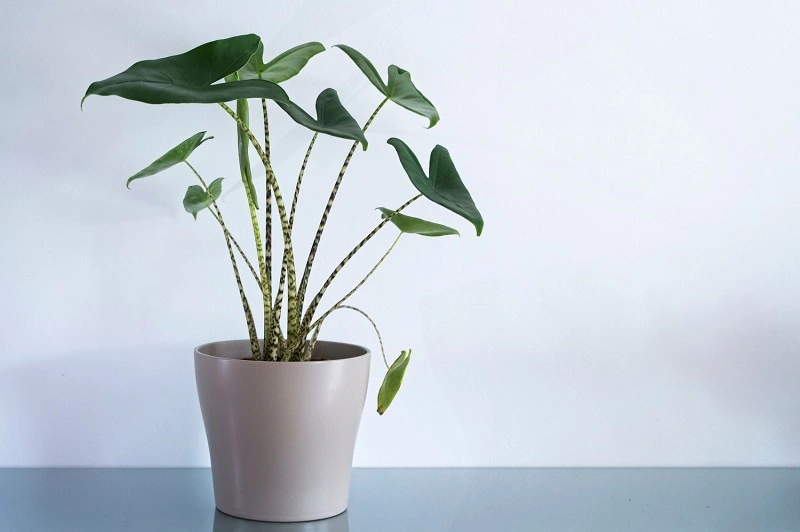
Alocasia - wie gießt man die Pflanze?
Die Alocasia ist eine Pflanze, die mäßige Feuchtigkeit bevorzugt. Ein zu trockener Boden ist eine große Gefahr für die Pflanze. Aber der Topf sollte nicht übermäßig bewässert werden. Kontrollieren Sie die Erde jeden Tag.
Alocasia - Pflege und Dünger
Das Düngen ist ein wichtiger Bestandteil der Alocasia-Pflege. Sie sollte alle 2 Wochen wiederholt werden, vor allem zwischen Frühlingsbeginn und Ende des Sommers.
Mineraldünger sind die besten Produkte für Alokasien. Sie können entweder wasserlösliche oder flüssige Produkte wählen. Letztere sind in der Regel bequemer in der Anwendung.
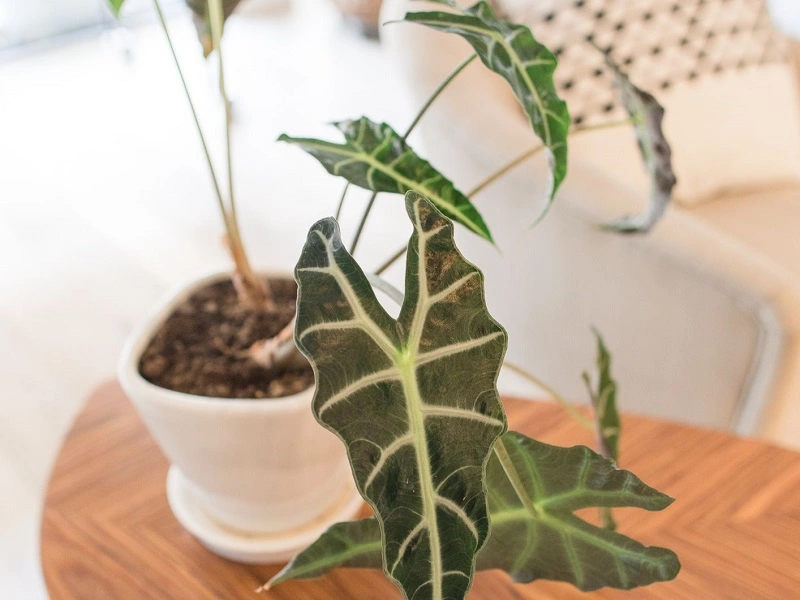
Alocasia - Vermehrung
Obwohl Alocasia recht anspruchsvoll in der Pflege ist, ist ihre Vermehrung recht einfach. Verwenden Sie einfach Stecklinge von der Pflanze. Sie sollten in ein spezielles Bewurzelungshormon getaucht und in separate Behälter gepflanzt werden.
Die beste Zeit für die Vermehrung von Alokasiepflanzen ist das Frühjahr, denn dann hat die Pflanze die Möglichkeit, stärker zu werden. Achten Sie darauf, Ihre neuen Alokasien bei einer etwas höheren Temperatur zu halten - etwa 27-28°C (80.6-82.4°F). Setzen Sie sie auch nicht der direkten Sonne aus.
Alocasia - Krankheiten und Schädlinge
Alocasia ist recht anfällig für Krankheiten, vor allem wenn sie unter schlechten Bedingungen gehalten wird. Trockener Boden ist eine große Gefahr für diese Pflanze, daher ist regelmäßiges Gießen unerlässlich. Was passiert, wenn die Alocasia nicht genug Wasser hat? Hier sind die häufigsten Anzeichen:
- gräuliche Farbe der Blätter,
- braune Flecken auf den Blättern,
- braune Ränder,
- Gelbfärbung der Blätter.
Außerdem kann die Alokasie auch von Schädlingen befallen werden. Am häufigsten sind Spinnmilben und Blattläuse. Wenn sie auf der Pflanze erscheinen, ist sofortiges Handeln angesagt. Sie können natürliche Methoden anwenden und die Blätter besprühen. Wenn das nicht funktioniert, zögern Sie nicht, chemische Produkte gegen die genannten Schädlinge einzusetzen.
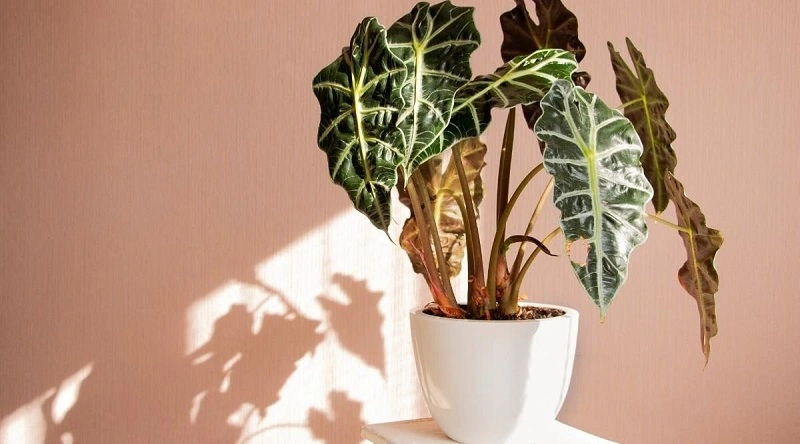
📍 Wie pflegt man die Alokasie?
Alocasia ist eine Pflanze, die Wärme, feuchte Erde und indirektes Sonnenlicht mag. Achten Sie darauf, die Zimmerpflanze regelmäßig zu gießen, da sie keine Trockenheit verträgt und dadurch anfälliger für Krankheiten und Schädlinge wird. Wechseln Sie die Erde jedes Jahr, damit die Alocasia gut wächst.
📍 Welcher Boden eignet sich am besten für Alocasia - Elefantenohrpflanze?
Der Boden für Alocasia sollte fruchtbar sein. Ein saurer pH-Wert um 5,5 ist die beste Wahl. Sie können Blumenerde mit Sand und Torf mischen. Stellen Sie sicher, dass Sie sie mit Kompost oder Mist anreichern.
📍 Wohin mit einer Alocasia-Pflanze?
Alocasia mag Wärme und sonnige Standorte. Sie darf aber nicht der direkten Sonne ausgesetzt werden. Gestreute Sonnenstrahlen halten die Pflanze gesund und ermöglichen ihr eine gute Entwicklung.
📍 Alocasia - was ist der beste Topf für die Pflanze?
Ein Gefäß für eine Alokasie sollte recht groß sein. Die Pflanze hat ein gut entwickeltes Wurzelsystem und wächst schnell - daher braucht sie viel Platz. Achten Sie darauf, sie regelmäßig umzupflanzen. Tun Sie das alle 2 Jahre.
Empfohlene Artikel




